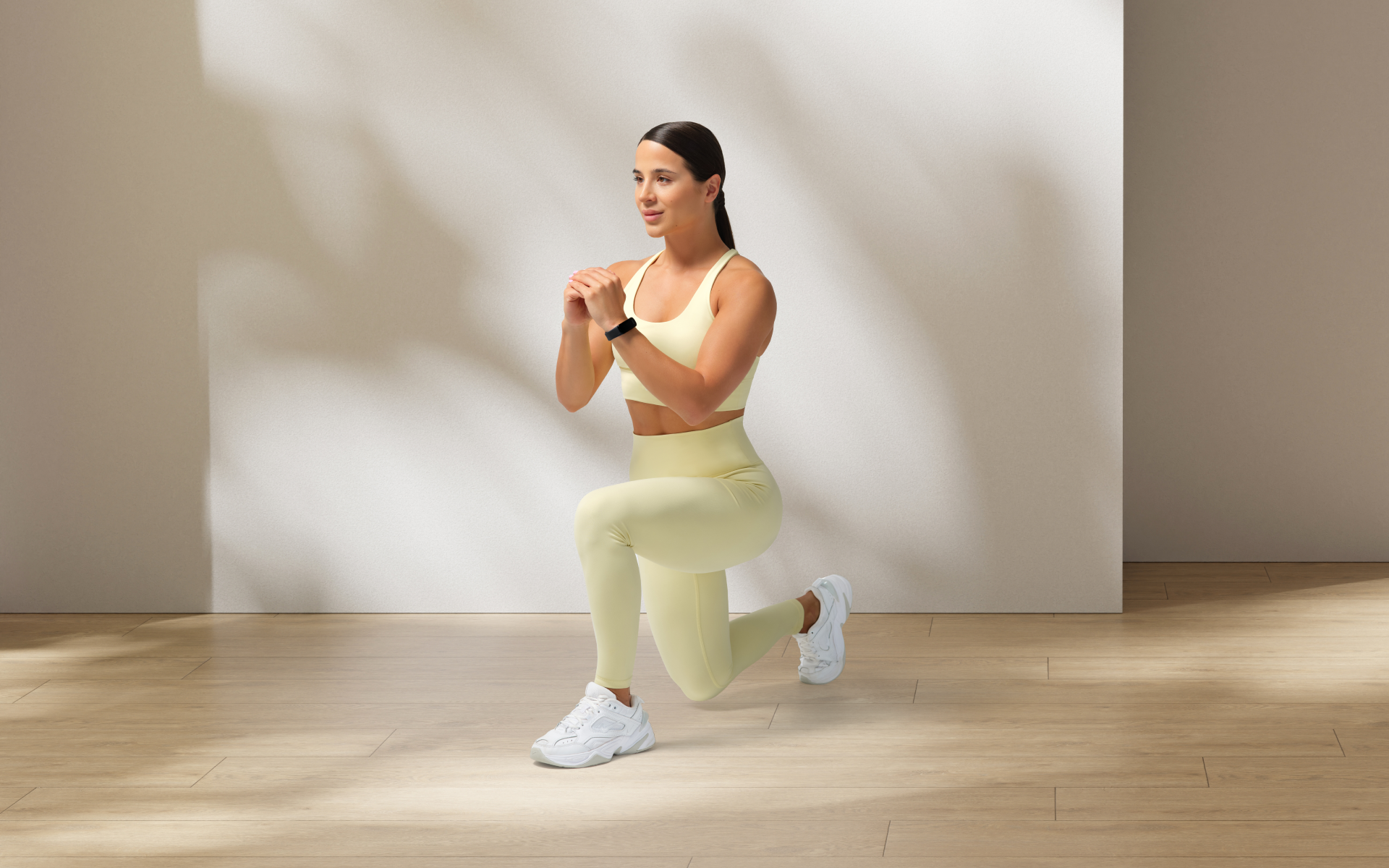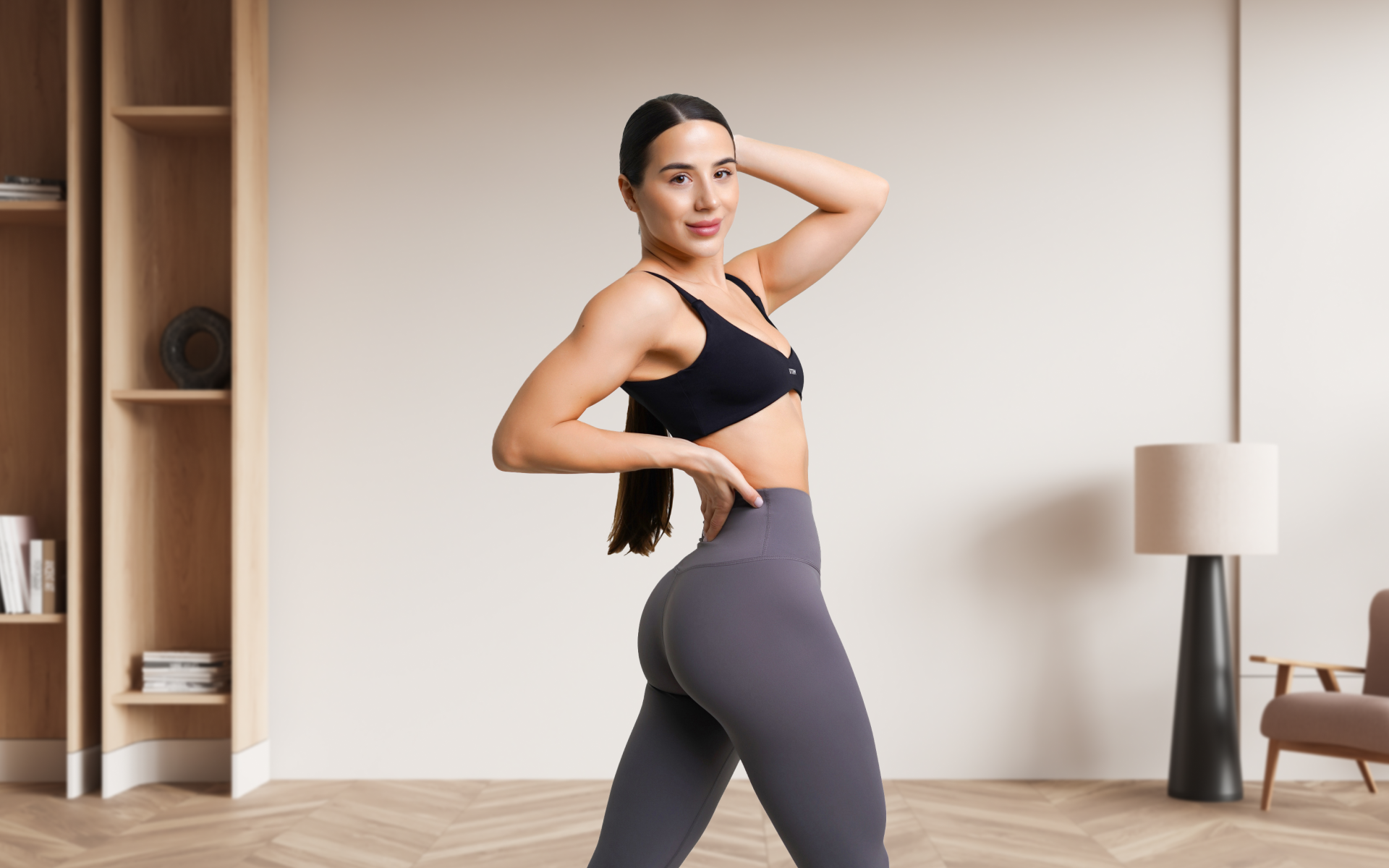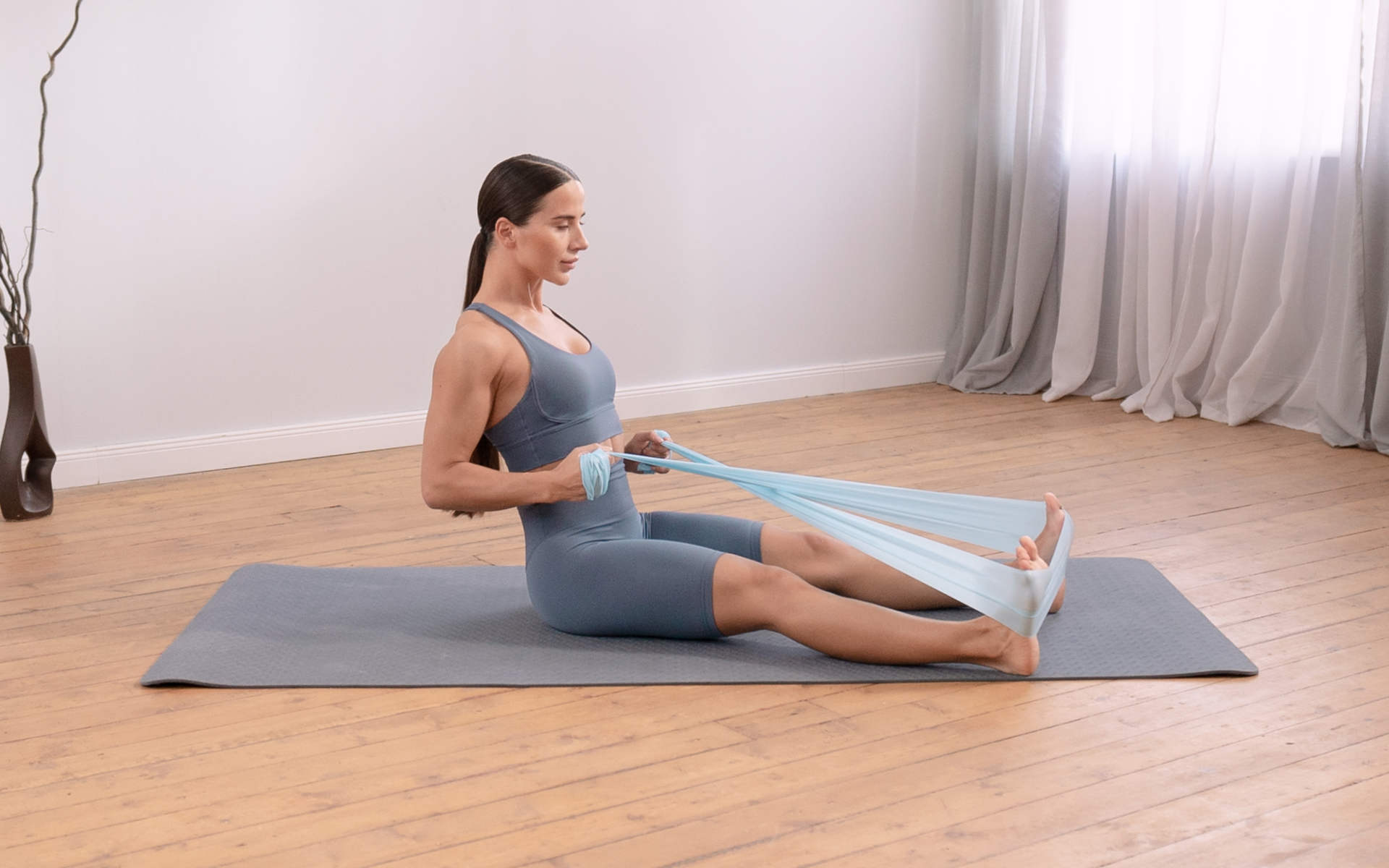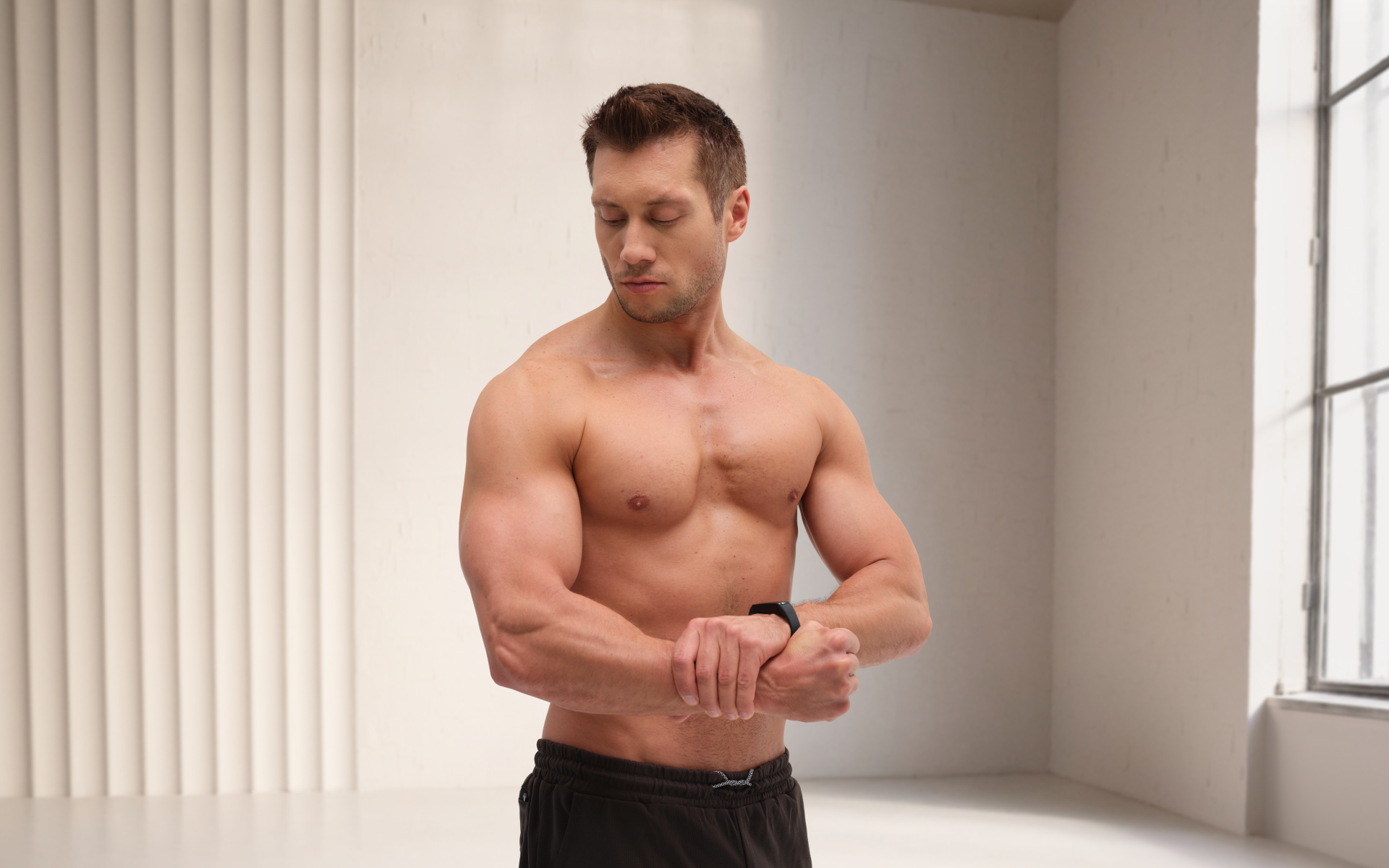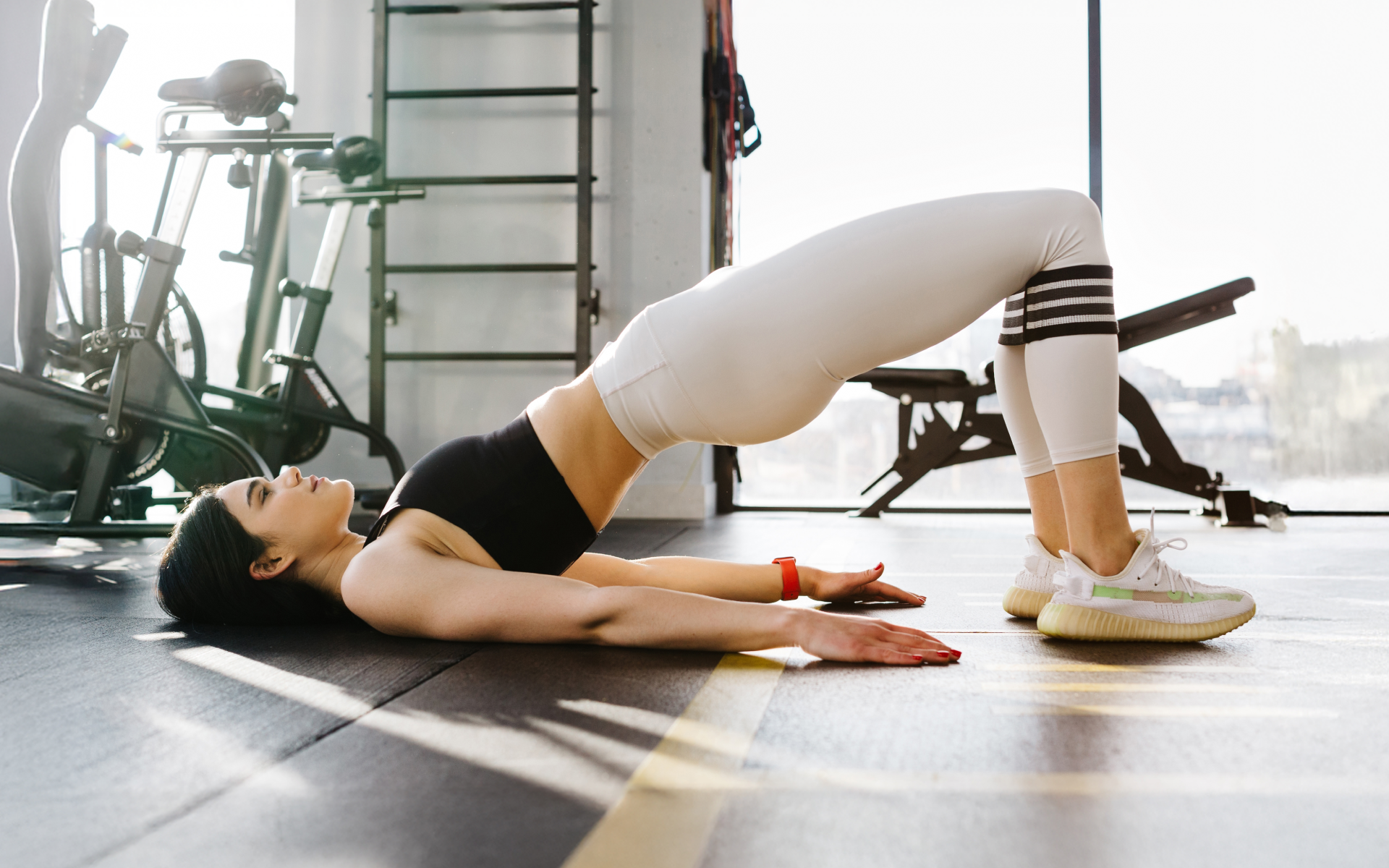The V-shape is a coveted symbol of strength and athleticism. It results from training the back muscles, particularly the latissimus dorsi, rhomboids, and trapezius muscles.
Beyond aesthetics, training your back has tremendous benefits. Your posture will improve, reducing the risk of pain and injury that can result from our increasingly sedentary lifestyles. Also, you’re more likely to perform those daily tasks, from lifting groceries to playing with your kids without discomfort (1).
Here’s the ultimate guide to back calisthenics exercises, including detailed descriptions of 20 movements that will enhance your strength, improve your posture, and help you sculpt a powerful, well-balanced physique.
Can You Train Back With Calisthenics?
You can train back with calisthenics, provided you have a solid understanding of back anatomy and eventually, mastery of the best calisthenics that target your back muscles.
Let’s start with the more straightforward question. Which muscles constitute the back?
The back muscles include four main muscle groups:
- Trapezius: It runs from your neck to your mid-back and is responsible for scapular movement and supports the arms.
- Latissimus Dorsi: This is the largest muscle in your back, wrapping around your sides.
- Rhomboids: These muscles connect your spine to your shoulder blades and work with the Trapezius in bringing your scapula together.
- Erector Spinae: Located on both sides of the spinal column, these muscles keep you upright and help rotate your spine.
These are the four major muscle groups you need to target when training your back, but there are also smaller, supporting muscles that play a role in back strength and stability.
These muscles include:
- Teres Major: Located beneath the Latissimus Dorsi, this muscle helps with arm extension and rotation.
- Teres Minor: This small muscle assists in shoulder movement and is located above the Teres Major.
- Infraspinatus/Supraspinatus: Also assisting with shoulder movement, these muscles are located on the back of your shoulder blade.
- Serratus Posterior: Located on either side of your spine, these muscles help with rotation and extension of the trunk.
Now that we know the anatomy of the back, let’s take a look at which exercises in a back calisthenics workout will target these muscles.
Dropping pounds by the dozens without putting yourself through the wringer is everyone’s weight loss pipe dream. But what if we told you that the BetterMe app can make that happen? Keep yourself in prime shape with our fat-blasting workouts, delicious budget-sparing recipes, and body-transforming challenges with our app!
How Do You Get The V Body Shape?
The v-body shape, sometimes referred to as the “v-taper,” is achieved through a combination of proper nutrition and targeted back exercises.
To achieve a v-shaped back, you need to build strength and muscle mass in your lats, traps, rhomboids, and erector spinae. Additionally, having low body fat levels will help define these muscles for that desired v-shape (3).
Find out more about what to eat for a V-shape back in our Calisthenics Diet Guide.
Here are 20 back calisthenics exercises that will help you achieve a v-shaped back:
Calisthenics Back Exercises No Equipment
Prone Cobra
The Prone Cobra effectively activates the lower trapezius and the erector spinae, with minor engagement in the rhomboids and serratus posterior.
This movement pattern involves lying face down and lifting your chest off the floor while rotating your arms to activate the upper and middle back.
It is highly scalable; beginners can start with shorter holds and fewer reps, building up to longer durations as strength improves. Here’s how to do it:
- Lie face down on the floor with arms at your sides.
- Keep your feet together and firmly on the ground.
- Lift your chest off the floor, rotate your thumbs up towards the ceiling, pulling your shoulder blades together.
- Hold the position for a count, then slowly lower back down.
Superman
Superman targets the erector spinae primarily, with support from lower back muscles like the quadratus lumborum. It simulates a flying motion, extending arms and legs upwards away from the floor.
This back calisthenics exercise is excellent for beginners and can be scaled by varying the hold time and repetitions. To perform the Superman:
- Lie on the floor face down, legs straight and arms extended beyond your head.
- Simultaneously lift your arms, legs, and chest off the floor.
- Hold this position for a few seconds.
- Lower back down and repeat.
ITY
The ITY raises are perfect for a dynamic back calisthenics routine, hitting your traps, lats, and posterior deltoids in unique angles formed by the arm positions: ‘Y’, ‘T’, and ‘I’. This movement pattern conditions back postural muscles and is scalable for all fitness levels.
To perform ITY:
- Lie face down with arms extended in a ‘I’ overhead.
- Lift your arms to form a ‘T’ with thumbs pointing up, then move into an ‘Y’ position.
- Move fluidly between these positions for several repetitions in a slow, controlled manner.
Bodyweight Rear Delt Fly
This no-equipment back calisthenics exercise enhances shoulder stability as it hits the posterior deltoids, teres minor, and infraspinatus. The motion involves lifting your arms to your sides, while bent over.
Variations in arm position allow beginners through advanced to scale the difficulty. Perform the Bodyweight Rear Delt Fly as follows:
- Stand with hips hinged, back straight, and torso parallel to the floor. Stretch arms out to the sides at shoulder height.
- Lift your arms off the ground, squeezing your shoulder blades together.
- Return to the starting position and repeat.
Read more: Calisthenics for Strength: Will It Make Me Stronger?
Scapular Wall Slides
Scapular wall slides benefit the back by improving shoulder mobility, motor control, and scapular stability. Scapular stability and shoulder mobility are important for being able to perform back exercises with good form, thus improving strength.
This exercise can start easy, with minimal slides, increasing in repetitions as control improves. Here’s how you do it:
- Stand with your back to a wall, feet about hip-width apart.
- Place your arms against the wall in a ‘W’ shape.
- Slide your arms upwards into a ‘Y’ and then back down. Focus on a slow and controlled movement throughout.
Scapular Push-ups
Scapular push-ups are designed to strengthen the serratus anterior, a vital player in scapular movement and shoulder stability. This back calisthenics no equipment exercise requires you to keep your arms straight and simply retract and protract your shoulder blades.
For scalability, start on your knees and progress to full plank position. To execute the scapular push-ups:
- Get in a plank position, with shoulders directly over your wrists.
- Keep your arms straight, and pinch your shoulder blades together, then spread them apart.
- Maintain the form without bending your elbows throughout the reps.
Door Frame Rows
This unique back calisthenics for beginners engages the rhomboids and traps, helping counteract the forward slouch. It involves pulling the elbows back as if performing a row against the resistance of a door frame or wall.
This exercise can be adjusted for intensity by changing the angle of your body to the wall. Performing door frame rows goes as follows:
- Stand facing a door frame, extend your arms in front of you and grip both sides of the door frame.
- Without moving your hands, pull your elbows back and squeeze your shoulder blades.
- Return to the starting position and repeat for the desired number of repetitions.
Calisthenic Back Exercises With A Pull Up Bar
A pull-up bar is a handy piece of equipment for back calisthenics exercises. Some fixtures are freestanding and installable in doorways or on walls with enough headroom.
Pull-ups
Pull-ups are a staple in any back calisthenics workout, primarily targeting the latissimus dorsi (lats) and secondary engaging biceps, rhomboids, and lower traps. This powerful compound movement pattern involves pulling the body up to a bar from a hanging position, which can be varied in grip width and style for scalability.
To perform Pull-ups:
- Hang from a pull-up bar with palms facing away from you, hands shoulder-width apart.
- Pull yourself up by drawing the elbows down to the floor, lifting your chin above the bar level.
- Lower yourself to the starting, hanging position in control and repeat for the desired number of repetitions.
Scapular Pull-ups
Scapular pull-ups focus on the scapular muscles, specifically the serratus anterior and lower trapezius. This nuanced movement includes scapular depression and retraction without bending the arms, perfect for beginners working on their form.
To perform Scapular Pull-ups:
- Start by hanging from the pull-up bar with straight arms.
- Retract and depress your shoulder blades, pulling your chest up slightly without bending your elbows.
- Release the contraction and return to the starting position.
Front Lever Raises
Front Lever Raises challenge the entire upper body, emphasizing the core, lats, and delts. This advanced calisthenics back and bicep exercise involves lifting the legs up while keeping the body straight, essentially creating a hanging, horizontal plank.
To perform Front Lever Raises:
- Hang from the bar with straight arms, palms facing away.
- Pull with your back and shoulders, raising your legs until your body is parallel with the ground.
- Hold the position briefly, then lower yourself back to the start.
Back Lever
The back lever is considered an advanced back calisthenics routine exercise that works the lower back, biceps, lats, and shoulders. This isometric hold involves suspending the body face down while holding onto the bar, requiring significant strength and control.
To perform the Back Lever:
- Hang from the bar with an overhand grip.
- Tuck your knees in and flip your body in an inverted position.
- Slowly extend your body out to a straight line, keeping your arms close to your body.
- Hold the move for time, then safely return to the start by tucking and flipping back upright.
Want to build an attention-grabbing bubble butt, blast away fat that’s stored in all the wrong places, spring-clean your diet, turn back the clock on your skin, skyrocket your self-confidence and shatter your insecurities? Check out the BetterMe app and set this plan in motion!
Calisthenic Back Exercises With A Suspension Trainer
Suspension trainers provide a versatile tool for calisthenics, enabling a range of exercises that can be modified to suit various fitness levels. They use one’s body weight and gravity as resistance and are particularly effective for engaging the muscles of the back and core.
Suspension Bodyweight Rows
The Suspension Bodyweight Row primarily targets the major muscles of the mid-back, including the latissimus dorsi (lats), rhomboids, and trapezius. The biceps and rear deltoids also play a secondary role as assisting muscles during the movement.
This exercise pattern involves a horizontal pull, where balance and core stabilization are key components. It is highly scalable by simply adjusting the feet position closer or farther from the anchor point to modify the difficulty level.
To perform Suspension Bodyweight Rows, follow these steps:
- Set the suspension straps to mid-length and lean back holding the handles with your palms facing each other, arms fully extended.
- Plant your feet on the ground and straighten your body to form a straight line from head to heels.
- Pull your torso up towards the handles while keeping your core tight and elbows close to your body.
- Lower yourself back down with control to the starting position and repeat.
Suspension Australian Pull-ups
Similar to the bodyweight rows, Suspension Australian Pull-ups work the mid-back muscles such as the lats, rhomboids, and trapezius. Additionally, the exercise engages biceps and rear deltoids.
This exercise involves a pull-up motion in a less vertical plane, reducing the intensity and making it more accessible to beginners. Scalability is achieved by adjusting the body’s incline relative to the ground.
To execute Suspension Australian Pull-ups:
- Set the handles slightly higher than waist height.
- Grab the handles with an overhand grip and walk your feet forward until your body is inclined and your arms are supporting your weight.
- Pull your chest to the handles while maintaining a rigid body line.
- Lower yourself steadily back to the start and repeat for the desired number of reps.
Suspension Face Pulls
Suspension Face Pulls directly target the posterior deltoids, with synergistic engagement from the upper trapezius, rhomboids, and even the external rotators of the rotator cuff.
This movement pattern is a face-level horizontal pull crucial for shoulder health and posture. Scalability can be easily managed by adjusting foot position and body angle relative to the suspension trainer.
Performing Suspension Face Pulls is as follows:
- Adjust the handles to about chest height.
- Face the anchor point and grasp the handles with palms facing down.
- Lean back slightly, extend your arms, and stagger your stance for balance.
- Pull the handles toward your face, flaring your elbows out to the sides and squeezing your shoulder blades.
- Extend your arms back to the starting position and repeat for the desired number of repetitions.
Suspension Reverse Flys
The Suspension Reverse Fly specifically targets the rear deltoids and is excellent for addressing the smaller stabilizing muscles of the upper back, including parts of the rotator cuff.
The movement pattern requires a balanced, dual-arm horizontal abduction. This exercise is highly scalable; the lower the body’s positioning is, the more challenging the movement.
To do Suspension Reverse Flys, these steps should be followed:
- Set the handles to around waist height and grab them with an overhand grip.
- Lean back with arms extended in front of you, palms facing each other, and with a slight bend in the elbows.
- With control, open your arms out to the sides in a reverse fly motion while keeping your body straight.
- Slowly return to the starting position, bringing your hands together without crossing them.
- Perform the exercise for the desired number of reps, taking care not to compromise form as fatigue sets in.
Read more: Starter Calisthenics: Shape Yourself Up With Beginner Full-Body Training
Calisthenic Back Exercises With A Resistance Band
Resistance bands are a portable and affordable piece of equipment that can add resistance to bodyweight exercises, increasing the intensity and simulating weight training (2). They’re ideal for calisthenics because they can be easily adjusted for different fitness levels and can add variety to a back workout routine.
Band Pull Aparts
Band Pull Aparts are great for targeting the posterior deltoids, which are the muscles at the back of the shoulders. They also work the rhomboids and trapezius muscles of the upper back.
The movement pattern of pulling the band apart horizontally engages these muscles in a way that promotes better shoulder stability and scapular retraction. This exercise is scalable by using bands of varying resistance levels or by adjusting the tension on the band.
Steps to perform Band Pull Aparts:
- Stand with your feet shoulder-width apart, holding a resistance band in front of you at chest height with both hands, palms facing down.
- Keep your arms straight and pull the band apart horizontally until your hands are in line with your shoulders.
- Squeeze your shoulder blades together at the end of the movement.
- Slowly return to the starting position and repeat for the desired number of repetitions.
Band Face Pulls
The Band Face Pull exercise primarily targets the rear deltoids, while the secondary muscles engaged include the upper trapezius, rhomboids, and external rotators of the rotator cuff.
The pulling movement towards the face with rotation of the shoulder joint is essential for balanced shoulder development and health.
This exercise can be made easier or more difficult by changing the resistance level of the band or standing further from the anchor point to increase tension.
Steps to perform Band Face Pulls:
- Secure the resistance band at head height and grasp the ends with both hands, palms facing each other.
- Step back to create tension in the band, and adopt a staggered stance for stability.
- Pull the band toward your forehead while flaring your elbows out and externally rotating your shoulders.
- Pause briefly as you squeeze your shoulder blades.
- Return to the start slowly and repeat for the recommended number of repetitions.
Band Bent Over Row
The Band Bent Over Row works the latissimus dorsi, which are the broadest muscles of the back, as well as the rhomboids and the middle part of the trapezius. This exercise mimics the traditional rowing movement pattern and is scalable by either using bands with more resistance or standing on the band with a wider stance to increase the tension.
Steps to perform Band Bent Over Row:
- Stand on the resistance band with your feet at hip-width and hold the band with both hands, palms facing each other.
- Hinge at the hips and slightly bend your knees to lean forward, keeping your back straight.
- Pull the band up towards your hips by pulling your elbows back, keeping your elbows close to your body and your core tight.
- Squeeze your back muscles at the top of the movement.
- Extend your arms to lower back down and repeat for the desired number of reps.
Band Lat Pulldowns
Band Lat Pulldowns focus on the latissimus dorsi but also involve the biceps, rear deltoids, and the lower trapezius as secondary muscle groups. The movement mirrors that of a lat pulldown machine, bringing the arms down into a ‘W’ formation from an overhead position.
Scalability is achieved by altering the resistance of the band or changing your seated/standing position relative to the anchor point.
Steps to perform Band Lat Pulldowns:
- Anchor the resistance band overhead and sit or kneel below it, grabbing the band firmly with both hands wider than shoulder width.
- Start with your arms extended upward, engaging your core muscles.
- Pull the band down to your upper chest, drawing your elbows down and slightly back.
- Pause at the bottom as you squeeze your shoulder blades together.
- Slowly extend your arms back up to the starting position and repeat for the prescribed number of repetitions.
FAQs
How Do You Target Your Upper Back Calisthenics?
Specific exercises that engage muscles like the latissimus dorsi, posterior deltoids, rhomboids, trapezius, and rotator cuff muscles to promote better shoulder stability and scapular retraction target the upper back in calisthenics. Some of these exercises include Band Pull Aparts, Band Face Pulls, and Band Bent Over Rows.
How Do You Train Wings for Calisthenics?
“Wings” refer to the muscles on the side of your back, known as the latissimus dorsi. To train these muscles in calisthenics, exercises like Band Lat Pulldowns, Pull-Ups, and Inverted Rows can be utilized. It’s also important to focus on proper form and engaging the lats throughout each exercise for optimal results.
How Do You Target Lats In Calisthenics?
Lats, or latissimus dorsi muscles, can be targeted in calisthenics by incorporating exercises that involve pulling movements such as Pull-Ups, Inverted Rows, and Band Lat Pulldowns. Additionally, proper form and engaging the lats throughout each exercise is essential for targeting and strengthening these muscles effectively (4).
How Can I Train My Back Without Weights?
Bodyweight exercises such as Pull-Ups, Inverted Rows, and Band Pull Aparts are great for training the back without weights. These exercises can be easily modified based on fitness level. Simply adjust the resistance of bands or change positions relative to the anchor point.
Our, Morning Calisthenics Guide, has a bunch of different exercises for the back that don’t require any weights!
Do Pushups Work Back?
Pushups primarily target the chest muscles, but they also engage the back muscles such as the latissimus dorsi, trapezius, and rhomboids through stabilization of the movement. However, pushups alone may not be sufficient to fully train and strengthen the back muscles, so it’s important to incorporate other exercises that specifically target the back as well.
Do Pull-Ups Work Back?
Pull-ups are an excellent exercise for targeting the back muscles, specifically the latissimus dorsi. They also engage other muscles such as the biceps, rear deltoids, and lower trapezius. Incorporating different variations of pull-ups, such as wide grip, close grip, or underhand grip can help target different areas of the back muscle group.
Do Planks Work Back?
Planks primarily target the core muscles, but they also engage the back muscles as stabilizers. While planks alone may not be enough to fully train and strengthen the back, incorporating exercises that specifically target these muscles is recommended for a well-rounded workout routine.
In our Pilates vs Calisthenics comparison guide, we explore the benefits of planks and other core exercises for overall strength and stability.
The Bottom Line
Back calisthenics exercises are an effective way to target and strengthen the back muscles without the need for weights. By incorporating exercises like Band Pull Aparts, Band Face Pulls, and Band Bent Over Rows into a regular workout routine, one can improve their overall back strength and develop better posture and stability.
DISCLAIMER:
This article is intended for general informational purposes only and does not serve to address individual circumstances. It is not a substitute for professional advice or help and should not be relied on for making any kind of decision-making. Any action taken as a direct or indirect result of the information in this article is entirely at your own risk and is your sole responsibility.
BetterMe, its content staff, and its medical advisors accept no responsibility for inaccuracies, errors, misstatements, inconsistencies, or omissions and specifically disclaim any liability, loss or risk, personal, professional or otherwise, which may be incurred as a consequence, directly or indirectly, of the use and/or application of any content.
You should always seek the advice of your physician or other qualified health provider with any questions you may have regarding a medical condition or your specific situation. Never disregard professional medical advice or delay seeking it because of BetterMe content. If you suspect or think you may have a medical emergency, call your doctor.
SOURCES:
- A Strong Back Is Vital For Good Health (2020,orsolyaszathmari.com)
- Effects of training with elastic resistance versus conventional resistance on muscular strength: A systematic review and meta-analysis (2019,nih.gov)
- Resistance Training Variables for Optimization of Muscle Hypertrophy: An Umbrella Review (2020,nih.gov)
- WHY IS PROPER WORKOUT FORM IMPORTANT? (2018,osrpt.com)









